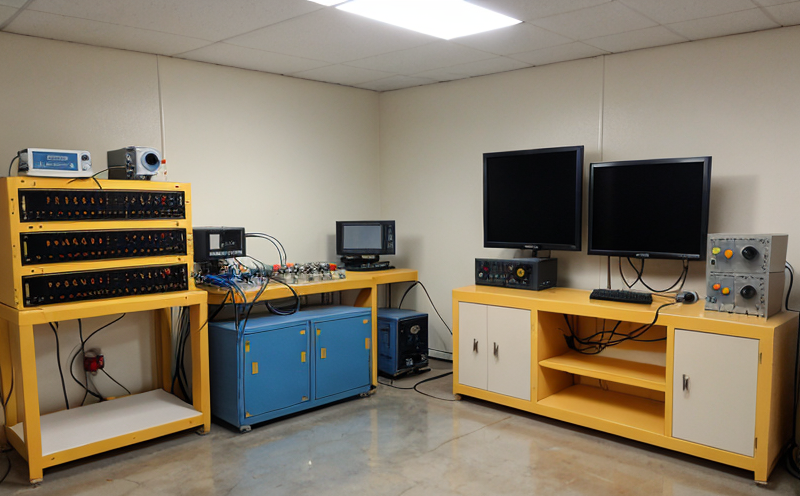Test Equipment and Instrumentation: The Backbone of Modern Technology
In todays fast-paced world, technology plays a vital role in every aspect of our lives. From smartphones to medical devices, computers to cars, modern innovations rely heavily on precise engineering and testing. To ensure that these products meet the required standards of performance, reliability, and safety, test equipment and instrumentation have become an essential part of product development.
Test equipment and instrumentation refer to a wide range of tools used for evaluating the performance of electronic and mechanical devices under controlled conditions. These instruments measure various parameters such as voltage, current, resistance, frequency, temperature, pressure, and many more. The primary purpose of test equipment is to verify that products meet their specifications and requirements, thereby ensuring quality control and reliability.
Types of Test Equipment and Instrumentation
There are numerous types of test equipment and instrumentation available, each designed for specific applications. Some common categories include:
Analog Instruments: These instruments use physical needles or pointers to display measurements on a scale. Examples include multimeters, oscilloscopes, and signal generators.
Digital Instruments: Digital instruments use numerical displays to show measurements in real-time. Examples include digital multimeters, logic analyzers, and network analyzers.
Specialized Test Equipment: This category includes equipment designed for specific applications such as medical testing, automotive testing, or industrial control systems.
Types of Signals and Measurement Parameters
Test equipment and instrumentation are used to measure various types of signals and parameters. Some common examples include:
AC (Alternating Current) Signals: Measured using instruments like multimeters, oscilloscopes, and signal generators.
DC (Direct Current) Signals: Measured using digital multimeters and other specialized instruments.
Digital Signals: Measured using logic analyzers and other digital test equipment.
Applications of Test Equipment and Instrumentation
Test equipment and instrumentation are used in various industries including:
Automotive: For testing engine performance, fuel efficiency, safety features, and electrical systems.
Medical: For testing medical devices, implants, and surgical equipment.
Telecommunications: For testing communication systems, network infrastructure, and signal transmission.
Industrial: For testing control systems, machinery, and manufacturing processes.
In-Depth Explanation of Two Key Instruments: Oscilloscopes and Multimeters
Oscilloscope (OScope)
The oscilloscope is a fundamental instrument in electronics testing. It measures and displays the waveform of an electrical signal over time. An oscilloscope has several key features:
Input: The input terminal connects to the device under test, allowing the measurement of voltage or current signals.
Trigger: The trigger feature synchronizes the display with specific events, ensuring accurate measurements.
Display: The display shows the waveform in real-time, providing a visual representation of signal characteristics.
Some common types of oscilloscopes include:
Analog Oscilloscope: Uses an analog circuit to measure and display waveforms.
Digital Storage Oscilloscope (DSO): Captures waveforms digitally for analysis later.
Mixed-Signal Oscilloscope: Combines analog and digital measurement capabilities.
Multimeter
A multimeter is a versatile instrument used to measure electrical parameters such as voltage, current, resistance, and capacitance. A typical multimeter has several key features:
Input Terminals: Connect to the device under test for measurement.
Selector Switch: Allows users to choose which parameter to measure (e.g., voltage, current).
Display: Shows measured values on a numerical display.
Some common types of multimeters include:
DMM (Digital Multimeter): Uses digital circuitry for precise measurements.
True RMS Multimeter: Measures AC signals with high accuracy.
Infrared Thermometer: Measuring temperature using infrared radiation.
QA Section
1.
What is the primary purpose of test equipment and instrumentation?
Test equipment and instrumentation are used to verify that products meet their specifications and requirements, ensuring quality control and reliability.
2.
What types of signals can be measured by an oscilloscope?
An oscilloscope can measure AC (Alternating Current) and DC (Direct Current) signals.
3.
How does a multimeter measure voltage?
A multimeter measures voltage using a selector switch to choose between different measurement ranges, and displaying the result on a numerical display.
4.
What is the difference between an analog oscilloscope and a digital storage oscilloscope?
Analog oscilloscopes use analog circuits for measurement, while digital storage oscilloscopes capture waveforms digitally for analysis later.
5.
Can test equipment be used in various industries?
Yes, test equipment and instrumentation are widely used across multiple industries including automotive, medical, telecommunications, and industrial control systems.
6.
How can I choose the right test equipment or instrument for my application?
Consider factors such as measurement range, precision, accuracy, frequency response, and compatibility with your device under test.
7.
What is the purpose of a trigger in an oscilloscope?
The trigger feature synchronizes the display with specific events, ensuring accurate measurements.
8.
How do I use a multimeter to measure resistance?
Use the selector switch to choose the resistance measurement range, connect the leads to the device under test, and read the result on the numerical display.
9.
Can test equipment be used for testing complex signals like digital communication protocols?
Yes, specialized test equipment such as logic analyzers can capture and analyze complex signals like digital communication protocols.
10.
Are there any limitations or safety considerations when using test equipment and instrumentation?
Yes, ensure proper training and handling of test equipment to avoid injury or damage to devices under test.

































